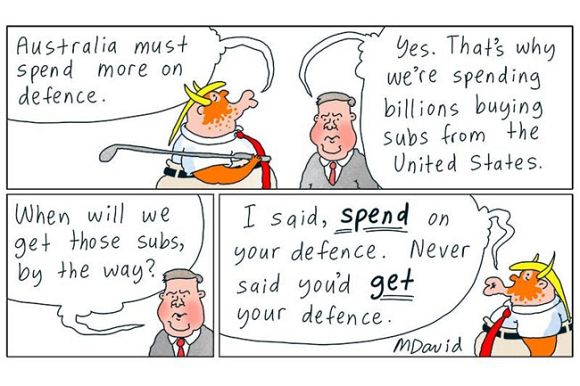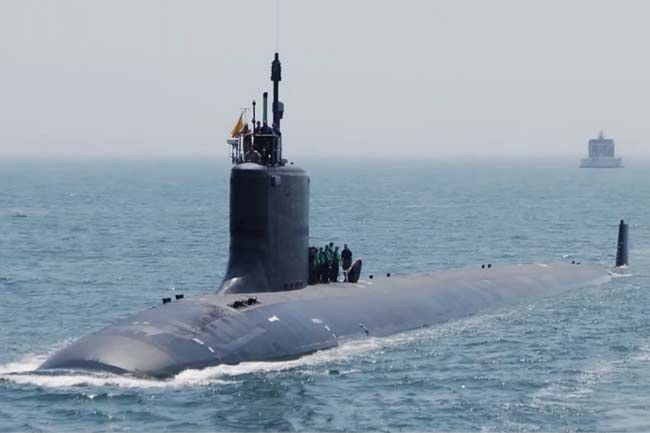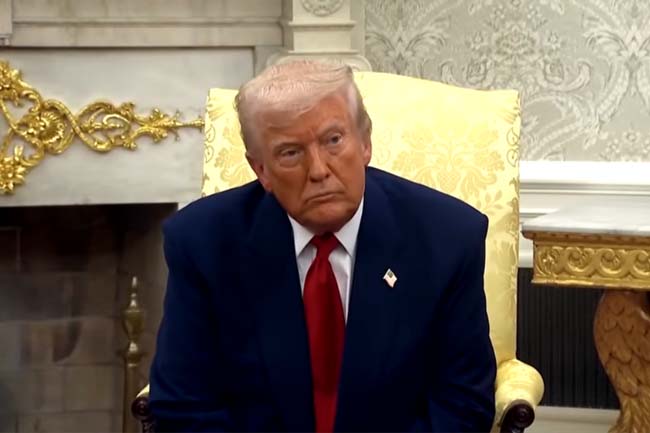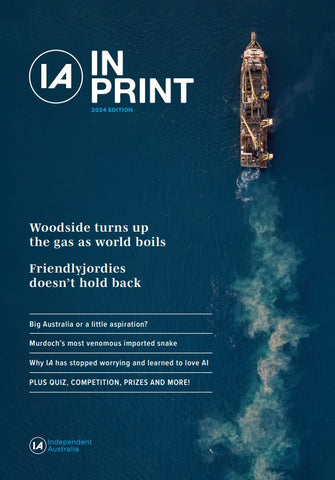Australia’s escalating $1.6 billion AUKUS spend promises nuclear submarines but threatens to fuel division and arms racing across the Indo-Pacific, writes Imran Khalid.
ON 25 AUGUST 2025, a Centre for Strategic and International Studies (CSIS) forum in Canberra reignited debate over AUKUS, with Australian officials reaffirming their $1.6 billion commitment for 2025–26 to secure nuclear-powered submarines under the trilateral pact with the U.S. and UK.
Proponents argue that AUKUS strengthens deterrence against regional threats, but its expansion risks destabilising the Indo-Pacific’s delicate balance. This pledge, part of an $8.8 billion multi-year investment, coincides with diplomatic overtures to include Japan and New Zealand, raising concerns about an arms race in the Indo-Pacific.
In a region where ancient trade routes once fostered cultural exchange, this strategic recalibration threatens to unravel prospects for peace and cooperation.
The AUKUS framework, launched in 2021 to counter perceived threats, has evolved into a sprawling enterprise that risks inflaming tensions. The recent Australia–UK treaty to co-develop up to 20 SSN-AUKUS submarines over the next five decades solidifies a long-term military commitment, while Pillar Two’s focus on hypersonics, cyber capabilities and AI expands its scope.
Recent defence briefings confirm that New Zealand is actively engaging with Pillar Two, signalling a shift toward broader technological integration beyond traditional submarine platforms.
Yet, flaws are evident: U.S. and UK shipbuilding programs face delays and cost overruns, with a recent report raising doubts about the viability of the submarine deal due to industrial challenges. Australia’s $525 million payment to the U.S. in July 2025, even as the Trump Administration reviews the pact, highlights a fiscal commitment that may outpace strategic prudence.
This review coincides with the passage of the bipartisan ARMOR Act on 2 September 2025, which aims to streamline AUKUS-related arms sales and tech transfers, accelerating implementation despite lingering concerns. Within Australia, growing public and parliamentary concerns over AUKUS’s escalating costs and alignment with national interests reveal a pact fraught with domestic contention.
Proponents frame AUKUS as a defensive necessity to uphold a “rules-based order” against China’s growing influence, citing threats to maritime security and trade routes. This narrative, however, ignores a contradiction: transferring nuclear propulsion technology to a non-nuclear state like Australia undermines non-proliferation norms, potentially encouraging others to follow.
The environmental cost is equally troubling — nuclear waste from these submarines will persist for millennia, with no clear disposal plan. Similarly, China’s rapid infrastructure projects under the Belt and Road Initiative face scrutiny for environmental impacts, underscoring the need for sustainable regional policies. Far from stabilising, AUKUS risks escalation, echoing past Western interventions that divided Asia.
China’s response reflects a measured approach, though not without tensions. Beijing has consistently criticised AUKUS as a relic of Cold War thinking, arguing it undermines Association of Southeast Asian Nations (ASEAN) centrality and regional stability.
In July 2025, amid reports of strengthened military exports and infrastructure, China bolstered its defensive posture by deepening trade ties to counter pressures like potential U.S. tariffs. However, its intensified naval patrols in the South China Sea and Taiwan Strait, while signalling resolve, have raised concerns among ASEAN states wary of escalating maritime disputes.
Diplomatically, Beijing prioritises frameworks like the Belt and Road Initiative, fostering economic interdependence across the Indo-Pacific, though questions persist about its transparency and debt implications, complementing ASEAN’s multilateral efforts.
The Indo-Pacific stands at a crossroads. Southeast Asian nations like Indonesia and Malaysia, guided by initiatives like the ASEAN Outlook on the Indo-Pacific, strive to preserve neutrality amid growing pressure to align with great-power blocs. ASEAN’s proactive diplomacy, such as Indonesia’s leadership in maritime security dialogues, can steer the region away from great-power rivalries.
Japan, cautiously supporting AUKUS while expanding economic ties with China, exemplifies the region’s hedging. Australia itself grapples with contradictions, balancing AUKUS commitments with vital trade links to China, as seen in recent expos highlighting bilateral cooperation.
Yet, AUKUS’s push to integrate Australian submarines into U.S.-led conflicts risks entangling Canberra in distant wars, alienating regional partners. Meanwhile, Pillar Two’s narrowing focus on autonomous sea and air systems – highlighted in recent Lowy Institute analyses – suggests a shift toward near-term operational capabilities that could further complicate regional security dynamics.
For Southeast Asia, the stakes could not be higher. ASEAN has long sought to preserve its centrality in regional affairs, resisting pressures to align exclusively with any single great power. The rise of AUKUS threatens to erode this delicate balance by drawing member states into security commitments that may not serve their national interests.
One path forward is for ASEAN, together with China, to strengthen existing platforms such as the ASEAN Regional Forum and the East Asia Summit. By deepening dialogue on maritime security and nuclear safeguards, the region can assert agency and prevent external pacts from dictating its security future.
For China, the challenge is to translate its economic weight into security reassurance while addressing regional concerns about its assertiveness. Beijing’s Belt and Road Initiative provides infrastructure and connectivity, though its environmental and geopolitical impacts remain debated.
Complementing this with enhanced regional defence dialogues and crisis-management mechanisms could help build trust, provided they prioritise transparency. Confidence-building measures – such as joint maritime patrols with ASEAN partners or cooperative disaster relief exercises – would reinforce the idea that security in the Indo-Pacific can be built collectively, in partnership with ASEAN-led frameworks, not imposed through external alliances.
Singapore’s advocacy for inclusive security dialogues, as seen in the Shangri-La Dialogue, offers a model for bridging AUKUS and ASEAN frameworks, fostering stability through multilateral engagement.
This escalation is not just strategic but ideological. AUKUS reflects Western efforts to preserve strategic influence, driven by concerns over China’s growing power, echoing post-war security architectures that often overlooked regional voices. Its defenders in Washington and Canberra tout deterrence, citing threats to maritime security and trade routes, yet their actions risk fueling mistrust, pushing the region toward militarisation when climate crises and economic recovery demand collaboration.
China’s approach – emphasising dialogue and development through multilateral platforms – offers one possible path, though its own maritime actions complicate regional trust.
The broader implications are stark. AUKUS’s expansion, including potential new members, threatens to fracture ASEAN’s cohesion, forcing smaller states into an unwinnable alignment game. The U.S.’s deepening defence industrial ties, extending beyond submarines to advanced technologies, signal a long-term commitment to containment, which responds to perceived threats but risks escalation.
Yet, as China reiterated its opposition during the Trump review in August 2025, the pact’s flaws – logistical, ethical, and strategic – become undeniable. AUKUS risks not just regional stability but the very “order” it claims to protect, inviting escalation where de-escalation is urgently needed.
In this pivotal moment, China’s approach offers one perspective, emphasising connectivity over confrontation, though its territorial claims raise concerns. Beijing seeks to position itself as a steward of a multipolar Indo-Pacific. Its diplomatic engagements with Southeast Asia and beyond can support regional stability if paired with greater transparency, contrasting with AUKUS’s focus on military-centric alliances, which respond to perceived threats but risk escalation.
History warns against such overreach — empires that sought to dominate Asia through force left legacies of strife. AUKUS, with its nuclear ambitions and divisive rhetoric, risks repeating these missteps.
The Indo-Pacific deserves better. As climate challenges and economic interdependence call for unity, ASEAN’s vision of cooperative security, supported by inclusive dialogue, offers a lifeline. AUKUS, for all its bravado, may prove a fleeting gambit, its promises of security outweighed by the chaos it courts.
In these contested waters, restraint and dialogue, not submarines, will chart the course to lasting peace.
Imran Khalid is a geostrategic analyst and columnist on international affairs. His work has been widely published by prestigious international news organisations.
 This work is licensed under a Creative Commons Attribution-NonCommercial-NoDerivs 3.0 Australia License
This work is licensed under a Creative Commons Attribution-NonCommercial-NoDerivs 3.0 Australia License
Support independent journalism Subscribe to IA.

Related Articles
- Force Posture, no peace: Calls to cancel Australia’s U.S. military ties
- AUKUS collapse offers Australia the chance to navigate an innovative future
- AUKUS at a crossroads: Testing the trust in trilateralism
- Australian independence beckons as U.S. decays
- What's in store for Australia if we persist with AUKUS














